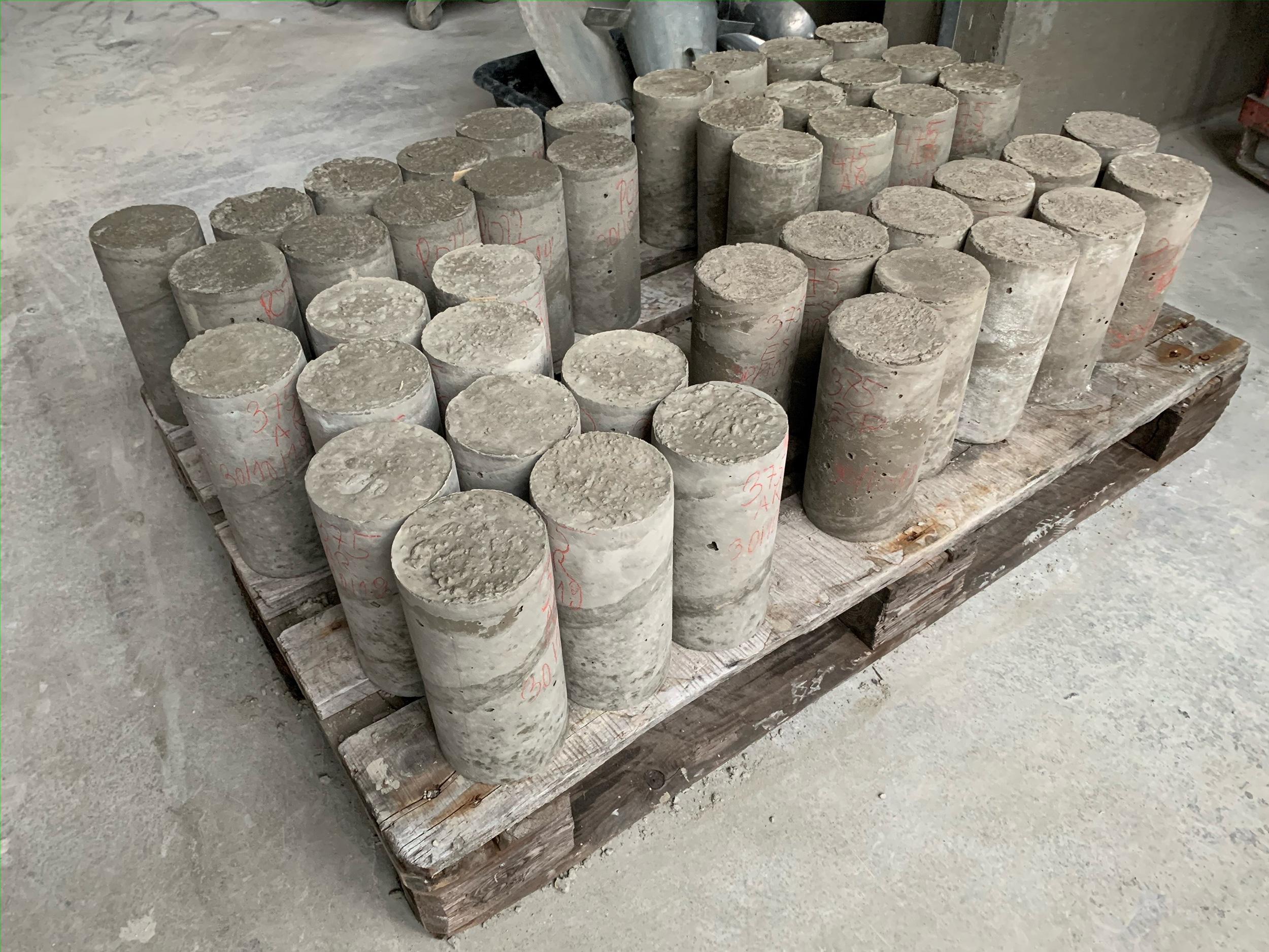
With the Ultra Green Concrete project, the Swiss Federal Institute of Technology in Zurich (ETH) is seeking to make low-carbon, high-performance concrete more generally accessible. To this end, a research group headed up by Franco Zunino, Senior Scientist at the Institute for Building Materials at ETH Zurich, is turning to an approach developed by the Swiss Federal Institute of Technology Lausanne (EPFL): A cement formulation (LC3) of 50 percent clinker with a combination of calcined clay and limestone was developed at the university, which saves around 40 percent CO2 compared with conventional cement. Zunino was also involved in this development.
As part of the ETH Zurich project, he is now using a second strategy in an attempt to cut CO2 emissions, namely reducing the proportion of cement in the concrete. This dual strategy offers flexibility to adapt low-carbon concrete compositions to individual markets, as ETH Zurich writes in a press release. “The ideal would be to implement both at the same time”, Zunino explains. However, in some markets this could be tricky, as “production capacity and infrastructure need to be put in place. However, it is possible to implement at least one of them and still reduce CO2 emissions”, he adds.
According to calculations by Zunino and his team, the CO2 emissions of ultra-green concrete can be reduced from 300 to around 80 to 100 kilograms per cubic meter without compromising the performance of the material. For this reason, in his opinion, there are no excuses for industrialized countries not to immediately switch to the new, more sustainable construction material.
In addition, the low-CO2 cement is more durable and cheaper than conventional variants. According to the information, production of the sustainable cement is already underway at seven cement plants across the world. Zunino believes that in ten years, LC3 will be the most widely used type of cement worldwide. ce/mm
Related documents
This PDF outlines why Greater Zurich is a top location for European business expansion
Learn more about the advantages of doing business in the Greater Zurich Area.
Find out why Switzerland is a top location for advanced manufacturing.
Related news
Meet with an expansion expert
Our services are free of charge and include:
- Introduction to key contacts in industry, academia, and government
- Advice on regulatory framework, taxes, labor, market, and setting up a company
- Custom-made fact-finding visits, including office and co-working space